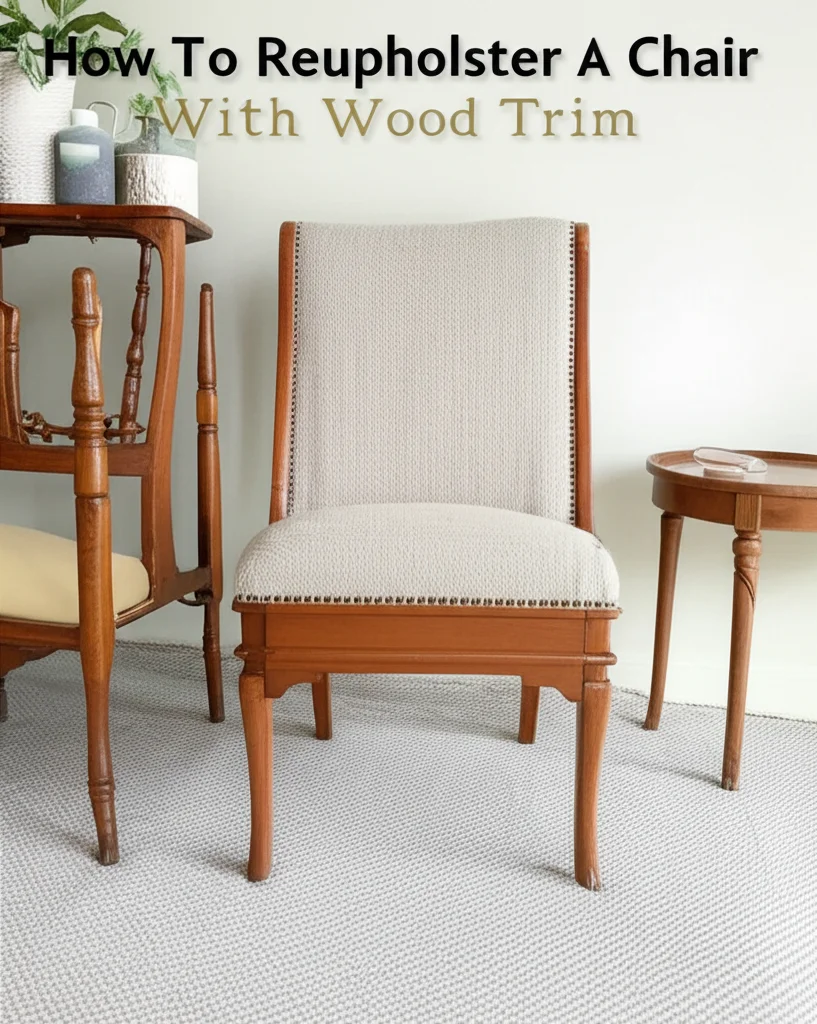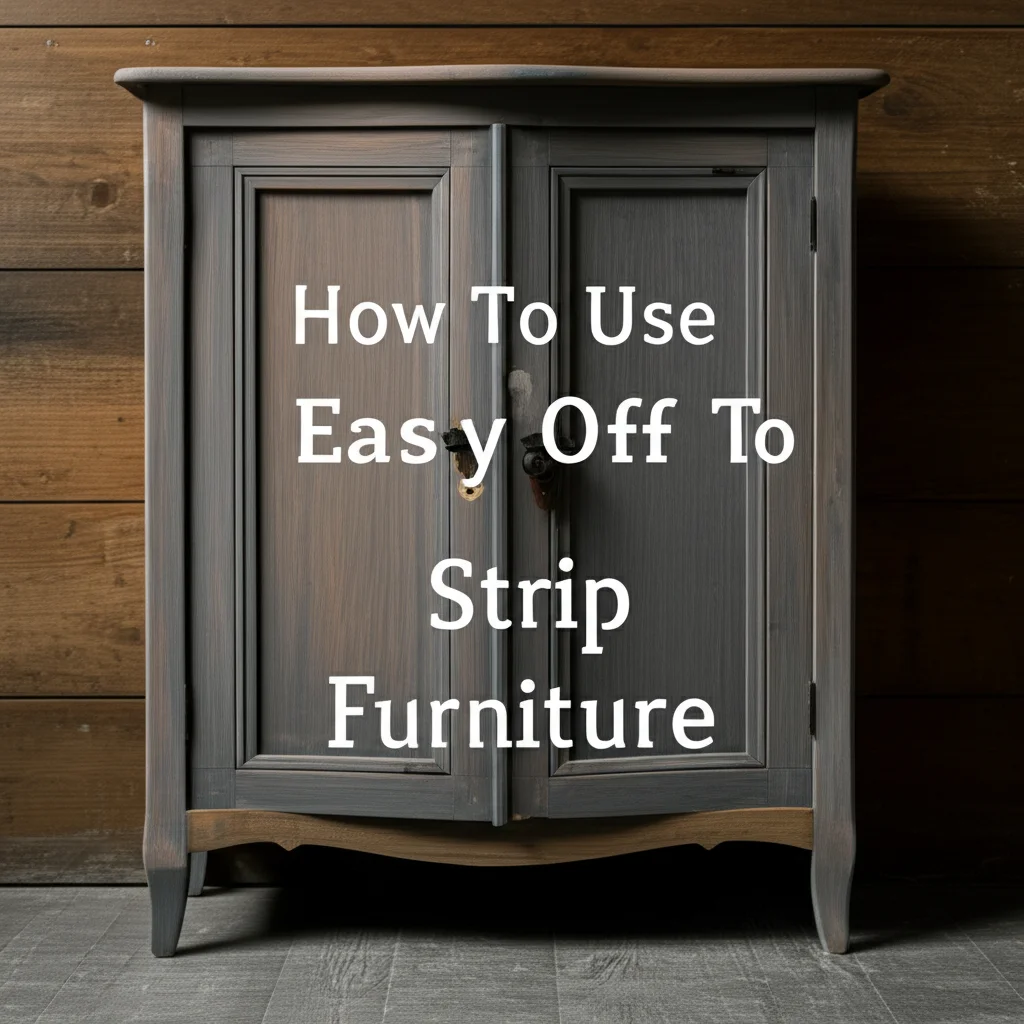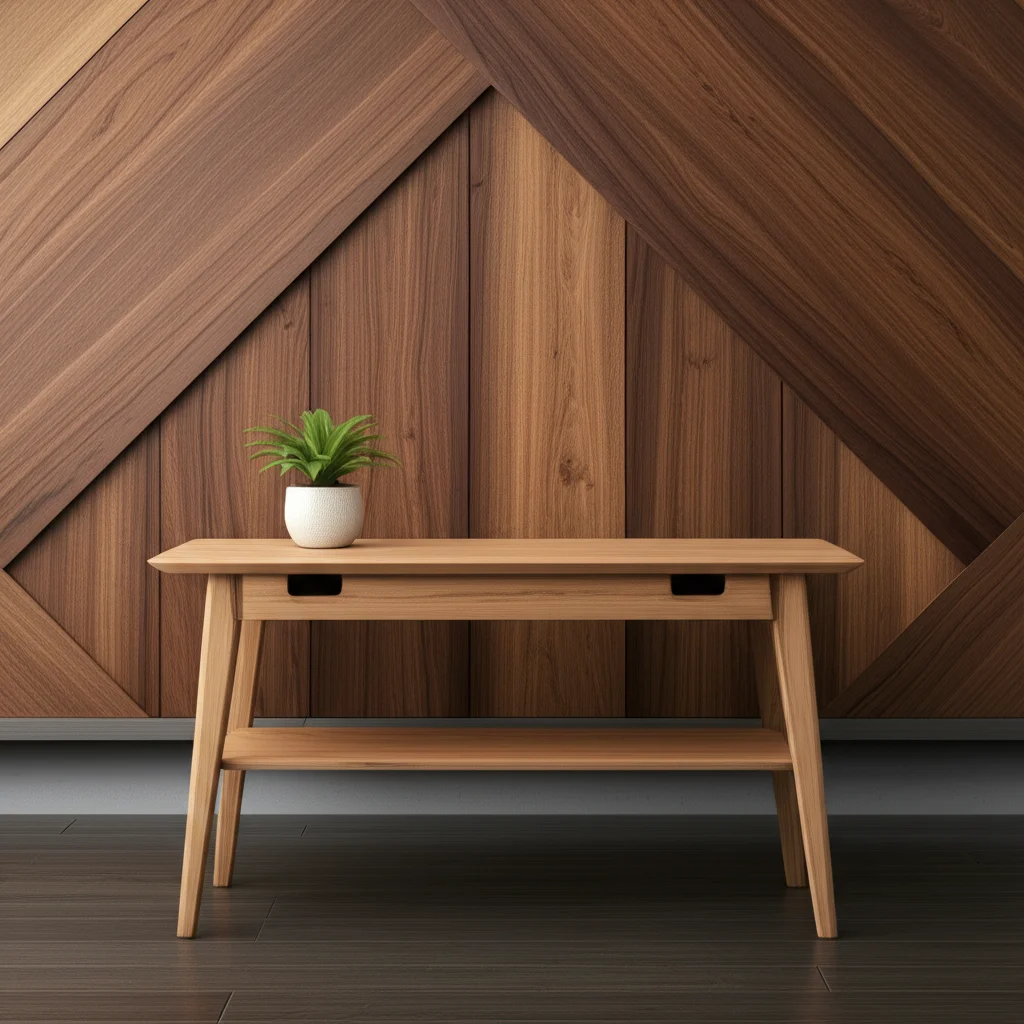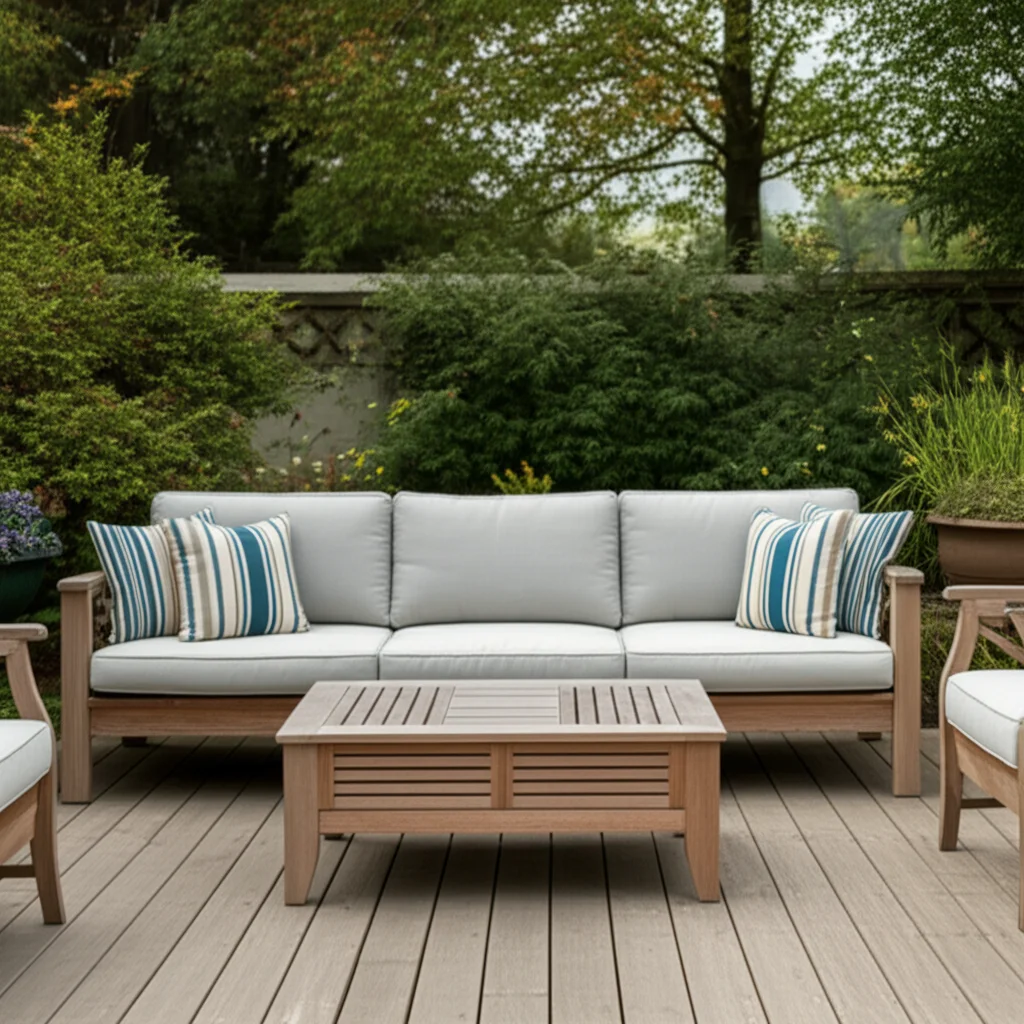· Todd Martin · Home Improvement, Furniture Repair · 21 min read
How To Repair Chipped Laminate Furniture
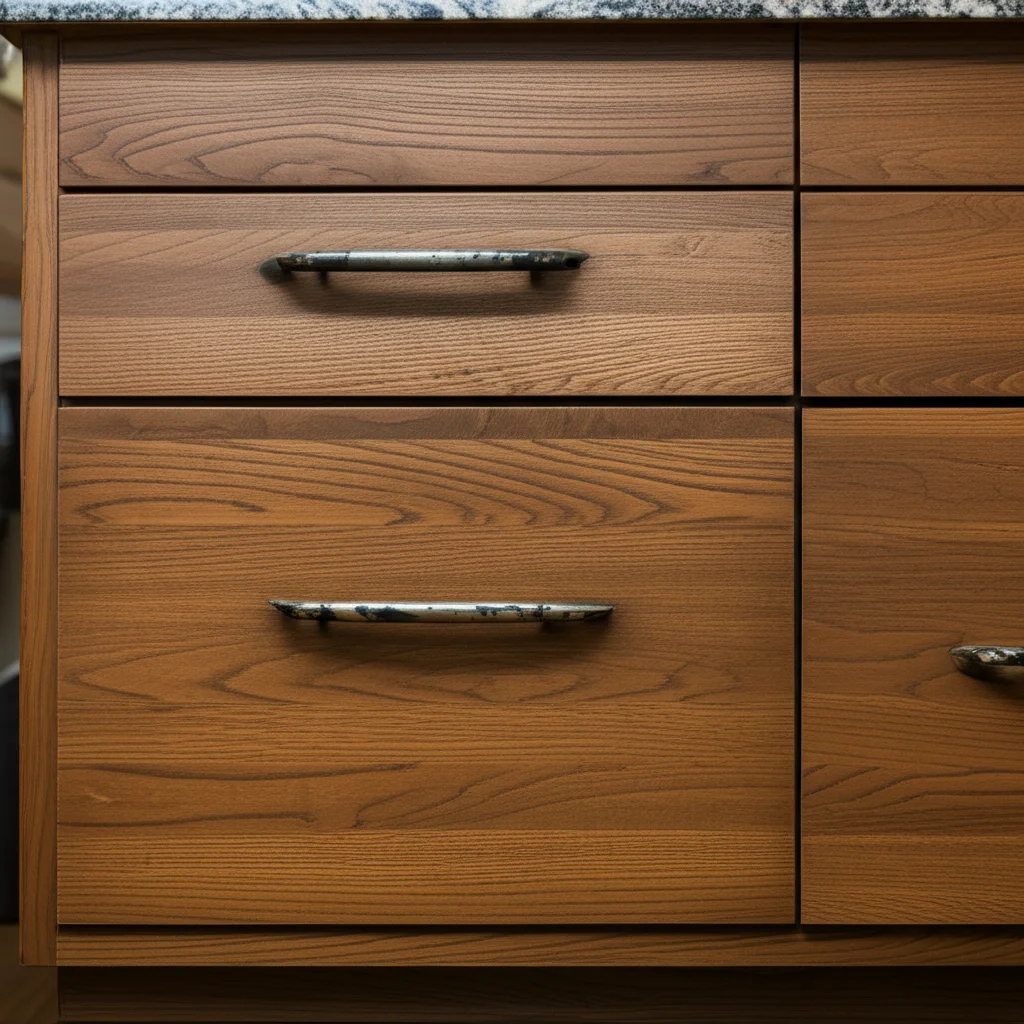
Restore Your Furniture: How To Repair Chipped Laminate Furniture
Do you own laminate furniture with unsightly chips? You are not alone. Laminate furniture is popular in many homes. It offers durability and affordability. However, daily use can lead to chips and damage. These chips detract from the beauty of your pieces.
I understand the frustration a chipped surface causes. You may think repair is difficult. You might even consider replacing the item. But this is not always necessary. Learning how to repair chipped laminate furniture saves you money. It also extends the life of your beloved items. This guide provides clear, easy steps. We will cover everything from assessing the damage to making it disappear. Get ready to give your furniture a fresh, new look.
Takeaway
Repairing chipped laminate furniture is a simple DIY project. You need basic tools and materials. Focus on cleaning, filling, matching color, and protecting the repair. This process restores the look of your furniture. It also saves you money on replacements.
Clear Answer to the Main Query
You can repair chipped laminate furniture by cleaning the damaged area, filling the chip with an appropriate repair material like wood filler or a laminate repair kit, carefully color-matching the repair, and then sealing it for durability. This process restores the surface.
Understanding Chipped Laminate Furniture Damage
Before you repair chipped laminate furniture, understand the damage. Laminate furniture consists of several layers. A particleboard or MDF core forms the base. A decorative paper layer sits on top. This layer has a printed design, like wood grain or solid color. A clear protective topcoat covers everything. This topcoat gives laminate its durability.
Chips happen when this protective layer breaks. The impact can expose the core material. Sometimes, only the decorative layer is affected. Other times, the chip goes deep into the core. The size and depth of the chip guide your repair method. Minor chips are surface-level. Deeper gouges expose the base. Water can cause more damage if a chip remains unrepaired. This is because water can seep into the exposed core. Water damage makes the core swell. This leads to bubbling or delamination. This guide focuses on fixing the chips themselves. Addressing water damage is a separate, more involved process. For instance, how to repair water damaged laminate table top offers specific guidance on that issue.
Inspect your chipped furniture closely. Note the color of the exposed core. Observe the texture of the chip. This initial assessment helps you choose the right repair materials. It also prepares you for the color-matching step. Different types of chips require different approaches. For example, a tiny surface scratch differs from a large missing chunk. Understanding these differences ensures a successful repair.
Gathering Essential Tools and Materials for Laminate Repair
You need specific tools and materials to repair chipped laminate furniture effectively. Having everything ready before you start saves time. It also ensures a smoother process. Do not rush out to buy everything at once. First, assess your chip. Then, buy only what you need.
Here are the basic items you will likely use:
- Cleaning Supplies: You will need a clean cloth and mild cleaner. Denatured alcohol or acetone can also be useful. These remove dirt and grease from the damaged area. A clean surface ensures proper adhesion for repair materials.
- Sandpaper: Fine-grit sandpaper (220-grit or higher) is important. It helps smooth rough edges around the chip. It also prepares the surface for filler.
- Putty Knife or Spreader: A small plastic or metal putty knife helps apply filler. It allows you to spread the material evenly. You can also use a old credit card.
- Laminate Repair Kit: Many hardware stores sell these kits. They often contain various colored fillers or waxes. They also include a small mixing tool and applicator. These kits are often specifically designed for laminate.
- Wood Filler or Epoxy Resin: For deeper chips, wood filler works well. Choose a filler that dries hard. Epoxy resin provides a very strong bond. It is good for structural repairs or large missing pieces.
- Color Matching Solutions: This is critical for an invisible repair. You might use:
- Laminate Repair Markers or Pens: These match common laminate colors. They are easy to use for small chips.
- Acrylic Paints: Small tubes of acrylic craft paint in various shades. You can mix these to achieve the perfect color.
- Touch-Up Kits: These often come with small paint pots and brushes. They are designed for furniture or cabinet touch-ups.
- Clear Protective Sealer: A clear topcoat or sealer protects your repair. It blends the repair with the surrounding laminate. This creates a durable finish. Look for a matte or satin finish to match most laminate.
- Safety Gear: Always wear gloves when working with chemicals. Safety glasses protect your eyes from dust and splashes.
Gathering these items makes the repair process efficient. It sets you up for success. Remember, the right tools make any job easier. Just like when you clean laminate cabinets, preparation is key.
Preparing the Damaged Area for Repair
Proper preparation is crucial. It ensures your repair lasts. A clean and smooth surface allows repair materials to bond correctly. This step is not difficult. It just requires a little patience.
Follow these steps carefully:
- Clean the Area: Start by wiping the chipped area. Use a clean cloth and a mild detergent solution. This removes dust, dirt, and grime. After cleaning, dry the area completely. Next, use rubbing alcohol or acetone on a cotton swab. Gently clean inside the chip itself. This removes any grease or residue. Acetone can sometimes affect the laminate finish, so test it in an inconspicuous spot first. Allow the area to air dry completely.
- Remove Loose Particles: Inspect the chip closely. Look for any loose fragments of laminate or wood. Use tweezers or a sharp craft knife to carefully remove them. You want a clean, stable edge for your repair. Loose pieces will prevent filler from adhering properly.
- Smooth Rough Edges: The edges of a chip can be sharp or uneven. Use fine-grit sandpaper (220-grit or higher). Gently sand the very edges of the chip. This creates a smoother transition. Do not sand the intact laminate surrounding the chip. You only want to smooth the broken edges. Wipe away any sanding dust with a clean cloth.
- Create Adhesion (Optional for deep chips): For very deep chips, you might consider scuffing the exposed core material slightly. Use a very fine-grit sandpaper for this. This helps the filler grip the core better. Skip this step for minor surface chips.
Taking your time with preparation pays off. It creates a solid foundation for your repair. A well-prepared surface means your repair will be strong and seamless. This prevents the chip from reappearing later.
Repairing Minor Chips in Laminate Furniture
Minor chips are usually surface scratches or small dings. They do not expose the core material deeply. These are the easiest to repair. You can make them almost invisible with the right technique. I find these quick fixes very satisfying.
Here are the common methods for minor chip repair:
Using Laminate Repair Pens
Laminate repair pens are like permanent markers. They contain paint matched to common laminate colors. These pens are ideal for shallow scratches or very small chips.
- Choose the Right Color: Find a pen that closely matches your laminate. Test the pen on a hidden spot if possible. The back of a drawer or inside a cabinet works well.
- Apply the Pen: Draw directly over the chip or scratch. Apply in thin layers. It is better to build up color gradually. You can wipe away excess immediately with a damp cloth if needed.
- Allow to Dry: Let the ink dry completely. Multiple coats might be necessary to achieve full coverage.
- Seal (Optional but Recommended): For added durability, apply a clear topcoat. A small amount of clear nail polish works for tiny chips. Specialty clear sealers from repair kits are also effective.
Using Laminate Repair Wax Sticks
Wax sticks are perfect for small to medium chips. They fill the void and provide color. Many laminate repair kits include these.
- Select Wax Colors: Kits often have several wax sticks. Choose colors that match your laminate. You might need to mix two or more colors. Heat the wax sticks slightly with a hair dryer or soldering iron. This softens them for mixing.
- Fill the Chip: Take a small amount of the chosen wax. Use a plastic spatula or a small putty knife. Press the wax firmly into the chip. Overfill the chip slightly.
- Level the Surface: Use the edge of the spatula or a credit card. Scrape away any excess wax. Work carefully to make the repair flush with the surrounding laminate.
- Buff the Area: Once level, gently buff the repair with a soft, lint-free cloth. This removes any residue and blends the repair.
- Seal the Repair: Apply a clear protective sealer over the repair. This protects the wax from daily wear. It also gives the repair a more consistent sheen.
These methods work wonders for small imperfections. They help your furniture look new again without major effort. They are a good first step before tackling larger issues, similar to how you might approach how to fix chipped laminate cabinets where minor damage is common.
Addressing Deeper Chips and Gouges
Deeper chips and gouges expose the core material. They require a more robust filling material. These repairs are still manageable for a DIY enthusiast. They simply need a bit more attention. I have successfully used these methods many times.
Here are the primary ways to fix deeper damage:
Using Wood Filler for Laminate
Wood filler is a versatile material. It works well for chips that penetrate the laminate layer. It dries hard and can be sanded.
- Choose the Right Filler: Select a wood filler that matches the general color of your laminate’s core. Or, choose a natural-colored filler you can paint later. Ensure it is a quick-drying, hard-setting type.
- Apply the Filler: Use a small putty knife or spatula. Press the filler firmly into the chip. Overfill the area slightly. Make sure the filler completely fills the void.
- Level and Smooth: Scrape off excess filler immediately. Make the filler level with the surrounding laminate surface. You can use a damp cloth to smooth the surface before it dries.
- Allow to Dry: Let the filler dry completely. Drying time varies by product. Refer to the manufacturer’s instructions.
- Sand if Necessary: Once dry, lightly sand the area. Use very fine-grit sandpaper (400-grit or higher). This creates a perfectly smooth, flush surface. Be careful not to sand the surrounding laminate.
- Clean Dust: Wipe away all sanding dust.
Using Epoxy Resin for Structural Chips
Epoxy resin provides an extremely strong and durable repair. It is excellent for larger chips or areas needing structural integrity.
- Prepare Epoxy: Epoxy resins come in two parts. Mix them according to the manufacturer’s directions. Work quickly as epoxy cures fast.
- Apply Epoxy: Use a small applicator or spatula. Fill the chip with the mixed epoxy. Overfill slightly.
- Level the Surface: Use a plastic scraper or old credit card. Level the epoxy flush with the laminate surface. You can also use a razor blade carefully to remove excess.
- Allow to Cure: Epoxy takes longer to cure than wood filler. Follow product instructions for curing time. Do not disturb the repair during this period.
- Sand and Finish: Once fully cured, sand the repair smooth. Use fine-grit sandpaper. Then clean the area.
Using Laminate Repair Paste
Specialized laminate repair pastes are available. These kits often come with various colored pastes you can mix.
- Mix Colors: If your kit provides multiple colors, mix them to match your laminate. Do this on a separate surface provided in the kit.
- Apply Paste: Use the included applicator. Press the paste firmly into the chip. Overfill slightly.
- Level: Scrape off excess paste with the applicator or a putty knife. Ensure the surface is even.
- Cure/Dry: Allow the paste to dry or cure according to instructions. Some pastes require a curing light.
- Clean and Finish: Clean the area. Apply a topcoat if the kit recommends it.
For deep damage, a solid fill provides a lasting solution. You are building a new foundation for the top layer. This prepares your furniture for the next step: color matching. Just as you might consider how to paint a laminate table for a full makeover, these repair techniques are about restoring the original look.
Color Matching and Blending for Seamless Repairs
This step turns a filled chip into an invisible repair. Color matching requires a keen eye. It makes the difference between an obvious patch and a perfect blend. Do not skip this important part.
Here’s how to achieve a seamless look:
Techniques for Color Matching
- Assess the Laminate Color: Look at your laminate under good light. Note the dominant color. Also, observe any undertones or patterns. Laminate often has subtle variations.
- Using Repair Markers/Pens (for minor repairs): If you used a repair pen for a small chip, apply it in thin layers. Build up the color. If your laminate has a wood grain, try to draw in the grain lines.
- Mixing Acrylic Paints: This is often the best method for precise matching.
- Start with Base Color: Begin with a paint color that closely matches the laminate’s main hue.
- Add Small Amounts of Other Colors: Use tiny drops of other paints to adjust the shade. For wood grain, add black, brown, or white. For solid colors, add tints to lighten or darken.
- Test on a Scrap: Always test your mixed color on a piece of scrap material. Let it dry completely. Paint often looks different wet than dry.
- Apply Thin Layers: Use a fine artist’s brush. Apply the mixed paint in very thin layers over the filled area. Let each layer dry.
- Mimic Grain (for wood patterns): If your laminate has a wood grain pattern, try to recreate it. Use a fine brush to draw thin lines. Practice on scrap material first. You can use different shades of your mixed paint to add depth.
- Using Laminate Repair Kit Pastes/Paints: These kits often come with specific instructions for mixing and applying colors. Follow their guide closely. They often provide small spatulas or brushes for application.
- Blending Edges: As you apply the paint, try to feather the edges. This means making the paint layer thinner at the edges. This helps it blend with the surrounding laminate. A slightly damp brush can help smooth transitions.
Applying a Clear Protective Sealer
Once your color match is perfect and dry, apply a clear sealer. This step protects the repair. It also helps integrate the repair into the overall finish.
- Choose the Right Sheen: Laminate furniture comes in various sheens (matte, satin, semi-gloss, high-gloss). Select a clear sealer that matches your furniture’s sheen. This ensures the repair does not stand out.
- Apply the Sealer: Use a small brush or cotton swab. Apply a thin, even coat of the clear sealer over the entire repaired area. Extend it slightly beyond the repair.
- Allow to Dry: Let the sealer dry completely. Multiple thin coats are better than one thick coat. Each layer adds more protection.
- Buff (Optional): For a truly seamless look, you might gently buff the dried sealer. Use a very soft cloth for this.
A well-matched and sealed repair is hard to spot. It restores the beauty of your furniture. This is similar to the final steps in refinishing, where you might consider how to stain laminate furniture without sanding to achieve a uniform look.
Protecting Your Repaired Laminate Furniture
You have put effort into repairing your chipped laminate furniture. Now, protect that hard work. Regular maintenance and preventative measures ensure your repair lasts. They also prevent new chips from forming.
Here are essential tips for long-term care:
Ongoing Care and Cleaning
- Gentle Cleaning: Clean laminate surfaces regularly. Use a soft, damp cloth. A mild soap solution is fine for sticky spots. Avoid harsh abrasive cleaners. These can scratch the laminate or damage your repair. Just like you would clean laminate countertops carefully, treat your furniture with care.
- Wipe Spills Immediately: Liquids can seep into any unsealed areas. They can cause swelling or delamination. This is especially true for the edges. Quickly wipe up any spills.
- Avoid Excessive Water: Never soak laminate furniture with water. This can damage the core. Use only damp cloths for cleaning.
Preventing Future Chips and Damage
- Use Coasters and Mats: Place coasters under drinks. Use placemats under dishes. This protects table tops from impacts and moisture.
- Felt Pads Under Objects: Apply felt pads to the bottoms of decorative items or lamps. These prevent scratches when items are moved.
- Be Careful with Heavy Objects: When moving heavy items on laminate, lift them. Do not drag them. Dragging causes scratches and chips.
- Mind Edges and Corners: The edges and corners of laminate furniture are vulnerable. They are prone to chipping. Be extra careful when moving furniture. Avoid bumping them against walls or doorways.
- Consider Protective Covers: For high-traffic areas or tables, use a table cover or clear protector. These add a layer of defense against impacts.
- Regular Inspections: Periodically inspect your furniture. Look for small chips or wear. Addressing minor issues early prevents them from becoming larger problems.
By following these simple protection tips, your repaired laminate furniture will stay beautiful. You will enjoy your restored pieces for many years. Prevention is always better than repair. But knowing how to repair gives you confidence. You can keep your home looking its best. For larger restoration projects or a complete surface overhaul, you might even consider methods like how to refinish a table with a laminate top to give the entire piece a renewed look and additional protection.
When to Consider Professional Laminate Furniture Repair
While many laminate furniture chips are DIY friendly, some situations might warrant professional help. Knowing when to call an expert saves you time and frustration. It also ensures the best possible outcome for your furniture.
Here are a few scenarios where I would recommend professional repair:
- Extensive Damage: If the chip is very large, or if there are multiple chips across a significant area, a professional might be more efficient. They have specialized tools and materials for large-scale laminate repair. They can also often achieve a more uniform finish across a wide damaged area.
- Structural Damage: If the chip has compromised the furniture’s structural integrity, a professional is better equipped. This means the core material is severely damaged or the chip affects how the piece functions. For instance, a chip that weakens a load-bearing surface.
- Delamination: This occurs when the laminate layer separates from the core. While minor delamination can sometimes be glued, extensive bubbling or peeling is difficult to repair seamlessly yourself. Professionals have techniques and glues to re-bond large areas effectively.
- Antique or Valuable Pieces: If your laminate furniture holds significant sentimental or monetary value, trust a professional. They have the expertise to preserve the original integrity and appearance. A botched DIY repair could decrease its value.
- Intricate Patterns or Finishes: Some laminate furniture has very complex patterns, high-gloss finishes, or unique textures. Matching these precisely requires a high level of skill. A professional can achieve an almost invisible repair on such intricate designs.
- Lack of Time or Confidence: If you do not have the time, patience, or confidence to tackle the repair, a professional is a good investment. They will complete the job efficiently and with a high-quality finish.
A professional laminate repair service can handle challenges beyond simple filling and painting. They often use specialized techniques. They have access to a wider range of colors and textures. This allows them to blend repairs perfectly. They provide a high-quality finish, ensuring your furniture looks its best. While DIY is empowering, knowing your limits ensures the best outcome for your cherished furniture.
Advanced Techniques and Tips for Perfecting Laminate Repairs
You can achieve a professional-looking repair with a few advanced techniques. These tips go beyond the basics. They help you get an almost invisible fix for your chipped laminate furniture. I have found these techniques helpful in my own projects.
Consider these ideas for perfecting your work:
- Utilizing Heat for Wax Fillers: For wax repair sticks, a low-heat soldering iron or a specialized laminate repair iron can be incredibly useful. This tool melts the wax directly into the chip. It creates a very strong bond. It also helps to level the wax perfectly with the surrounding surface. The heat also helps blend different wax colors directly in the chip.
- Layering for Depth and Texture: Laminate often has a subtle texture. Do not just fill the chip with one flat layer. For deeper chips, apply the filler in thin layers. Allow each layer to dry partially. This builds up strength. When color-matching, use multiple thin coats of paint. This allows you to add subtle variations. You can mimic wood grain or stone patterns found in your laminate. Use a very fine brush to draw tiny lines or dots. This adds realism.
- Using Rubbing Compound for Sheen Matching: After applying a clear sealer, the repaired area might have a slightly different sheen. For semi-gloss or high-gloss laminates, a tiny dab of automotive rubbing compound can help. Apply it with a soft cloth. Gently buff the repaired area. This polishes the surface. It helps blend the sheen with the surrounding laminate. Test this method in an inconspicuous spot first.
- Creating a Custom Texture: If your laminate has a textured finish (e.g., wood grain with slight ridges), you can try to replicate it. After applying the final layer of filler or paint, gently press a piece of plastic wrap onto the wet surface. Then lift it off carefully. This can create a subtle, irregular texture. Experiment with different materials to find one that matches.
- Practicing on Scrap Material: Before working on your actual furniture, practice. Use an old piece of laminate flooring or an unneeded part of the furniture. This allows you to experiment with color mixing. You can also practice your application technique. It helps build confidence before tackling the visible repair.
- Using a Fine-Tip Syringe for Liquid Fillers: For very narrow or deep cracks, a fine-tip syringe can precisely inject liquid filler or epoxy. This ensures the material reaches the bottom of the crack. It minimizes air bubbles.
- Patience and Lighting: Good lighting is crucial for color matching and detailed work. Work in a well-lit area. Take breaks and revisit the repair. Fresh eyes can spot differences you missed. Patience allows for thin layers and careful blending.
These advanced tips elevate your repair skills. They move your work from “fixed” to “invisible.” With practice, you will achieve truly seamless results. This extends the life and beauty of your laminate furniture.
Frequently Asked Questions About Chipped Laminate Furniture Repair
How long does a laminate furniture chip repair last?
A well-executed laminate chip repair can last for many years. Its longevity depends on the repair material used and the furniture’s use. Epoxy or hard-drying wood fillers provide durable results. Regular cleaning and care also extend the repair’s life. Avoid placing heavy items on the repaired spot.
Can all types of chipped laminate furniture be repaired?
Most chipped laminate furniture can be repaired. Minor chips are easy DIY projects. Deeper gouges require more robust fillers. Extensive damage like severe delamination or structural breaks might be challenging. In such cases, professional repair or replacement becomes more practical.
Is it expensive to repair chipped laminate furniture?
No, repairing chipped laminate furniture is generally inexpensive. DIY kits cost between $15-$50. You might already own many of the basic tools. Compared to replacing furniture, repair is a very budget-friendly option. Professional repairs cost more, but less than new furniture.
What if I cannot find a perfect color match for my laminate?
Achieving a perfect color match is the hardest part. Laminate repair kits offer common colors. Acrylic paints allow custom mixing. If a perfect match is impossible, aim for a very close one. A slightly off color is less noticeable than an exposed chip. A clear topcoat helps blend it.
Can I paint over the repaired chipped area?
Yes, you can paint over a repaired chipped area. First, ensure the repair material is completely dry and smooth. Then, prime the area for better adhesion. After priming, you can paint over it. This is a good option if you plan to change the furniture’s color entirely. Consider how to paint a laminate table for full guidance.
What are the common mistakes to avoid when repairing laminate chips?
Common mistakes include not cleaning the area properly, rushing the drying time, or using too much filler. Failing to level the filler flush with the surface is another mistake. Not color-matching carefully or skipping the protective topcoat also leads to poor results. Take your time with each step for the best outcome.
Conclusion
Repairing chipped laminate furniture is a rewarding DIY project. You do not need to discard furniture just because of a chip. This guide showed you how to repair chipped laminate furniture step-by-step. You learned to assess damage, gather tools, and prepare the surface. We covered methods for minor and deep chips. Color matching techniques help achieve an invisible finish. Finally, you understand how to protect your furniture.
- Laminate Repair
- Chipped Furniture
- Furniture Restoration
- DIY Furniture
- Home Repair Tips
- Laminate Fix
- Furniture Maintenance


